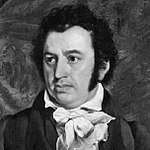Geraldine Taylor
| Mary Geraldine Guinness | |
|---|---|
 Mrs. Howard Taylor: Missionary and Author | |
| Born |
25 December 1865 Liverpool, Lancashire, England |
| Died | 6 June 1949 (aged 83) |
| Spouse(s) | |
| Parent(s) |
Henry Grattan Guinness Fanny E. Guinness |
Mary Geraldine Guinness (金樂婷; 25 December 1865 – 6 June 1949), often known as Mrs. Howard Taylor, was a British Protestant Christian missionary to China, and author of many missionary biographies on the history of the China Inland Mission (CIM). She was the daughter of the revivalist preacher and author Henry Grattan Guinness, a friend of James Hudson Taylor, founder of the CIM. She became Taylor's daughter-in-law when she married his son, fellow CIM missionary Frederick Howard Taylor.
Single woman and missionary

In her youth, Taylor taught a Bible class for "factory-girls" in Bromley-by-Bow in the East End of London where they lived. She attended meetings at "Berger Hall" named after William Thomas Berger.
She left London for China as a second-class passenger on the P&O vessel Kaisar-i-Hind I[1] in January, 1888, age 22. The Hundred missionaries had all sailed to China the previous year. Among the 25 passengers (16 men, 5 ladies [sic]) aboard the steam ship with her were Miss Mary Reed (daughter of Mrs Henry Reed and sister of Mrs Harry Guinness), Mr and Mrs Hunt (travelling to Hanchung)[2] and the Pigott family of The Sheo Yang Mission (who were eventually killed during the Boxer Rebellion).
As recorded in In the Far East (1889), the Kaisar-i-Hind took a route passing Gibraltar (10:30pm, 31 January 1888), calling at Naples and then passing the Straits of Messina, stopping for a day at Aden and then onward to Colombo, Ceylon.
At Colombo the missionary party boarded the P&O vessel S.S. Deccan, bound for Shanghai. A stop in Penang, Malaysia, allowed Geraldine a first contact with many Chinese who came on board. Then a stop at Singapore followed. Her first time on Chinese soil was later at a stop at Hong Kong[3] where she was received by Dr and Mrs Chalmers of the London Missionary Society, who introduced them also to Mr and Mrs Bender of the Basel Mission. Shanghai was reached next. But Shanghai was not their final destination. Staying only long enough to exchange their European clothes for the national Chinese costume, the missionaries started on again, leaving this first station of the China Inland Mission behind them and travelling on the boat Fuh-ho ("Happy Harmony") in the substantially cheaper Chinese accommodations up the Yang-tsi River to Chinkiang.[4] Lastly on to a barge some 6 hours to Yang-chau, finally arriving at Yang-chau on 23 March 1888.[5]
She wrote to her sister after a short time in China:
| “ | Oh! if English Christians only knew the need and the longing willingness of these dear souls to hear the glad tidings, and the joy, the unspeakable joy of a missionary's life, they would surely cry from the depths of yearning hearts, "Lord, here am I, send me, send me."[6] | ” |
After training in China, Geraldine was eventually stationed in Honan Province.
Published works
- In the Far East (1889)
- The Story of the China Inland Mission (1893)
- One of China's Scholars: The Early Life and Conversion of Pastor Hsi (1900)
- Guinness of Honan (1930)
- Borden of Yale '09 (1913)
- Hudson Taylor In Early Years; The Growth of a Soul (1911)
- Hudson Taylor and the China Inland Mission; The Growth of a Work of God (1918)
- Though War Should Rise (1914)
- Pearl's Secret
- The Call of China's Great North-West, or, Kansu and Beyond (1923)
- With P’u and His Brigands (1922)
- Hudson Taylor's Spiritual Secret (1932)
- Faith's Venture (1932)
- Margaret King’s Vision (1934)
- The Triumph of John and Betty Stam (1935)
- By Faith: Henry W. Frost and the China Inland Mission (1938)
- Sirs, Be of Good Cheer (1941)
- A Story Without End
- Behind the Ranges: Fraser of Lisuland (1944)
Notes
References
- Guinness, Lucy (1889). In The Far East: Letters From Geraldine Guinness in China. London: Morgan & Scott. Available on-line at the Boston University digital archive.
- Broomhall, Alfred (1989). Hudson Taylor and China's Open Century: It Is Not Death To Die. London: Hodder and Stoughton.
- Broomhall, Marshall (1915). The Jubilee Story of the China Inland Mission. London: Morgan and Scott.
- Guinness, Mary Geraldine (1893). The Story of the China Inland Mission vol II. London: Morgan and Scott.
- Pollock, John (1964). Hudson Taylor and Maria Pioneers in China.
- Steer, Roger (1990). Hudson Taylor: A Man In Christ. London: Hodder and Stoughton.
- Taylor, Dr. and Mrs. Howard (1918). Hudson Taylor and the China Inland Mission; The Growth of a Work of God. London: Morgan and Scott.
- Tucker, Ruth (1983). From Jerusalem to Irian Jaya A Biographical History of Christian Missions. Grand Rapids, Michigan: Zondervan. ISBN 0-310-23937-0.
